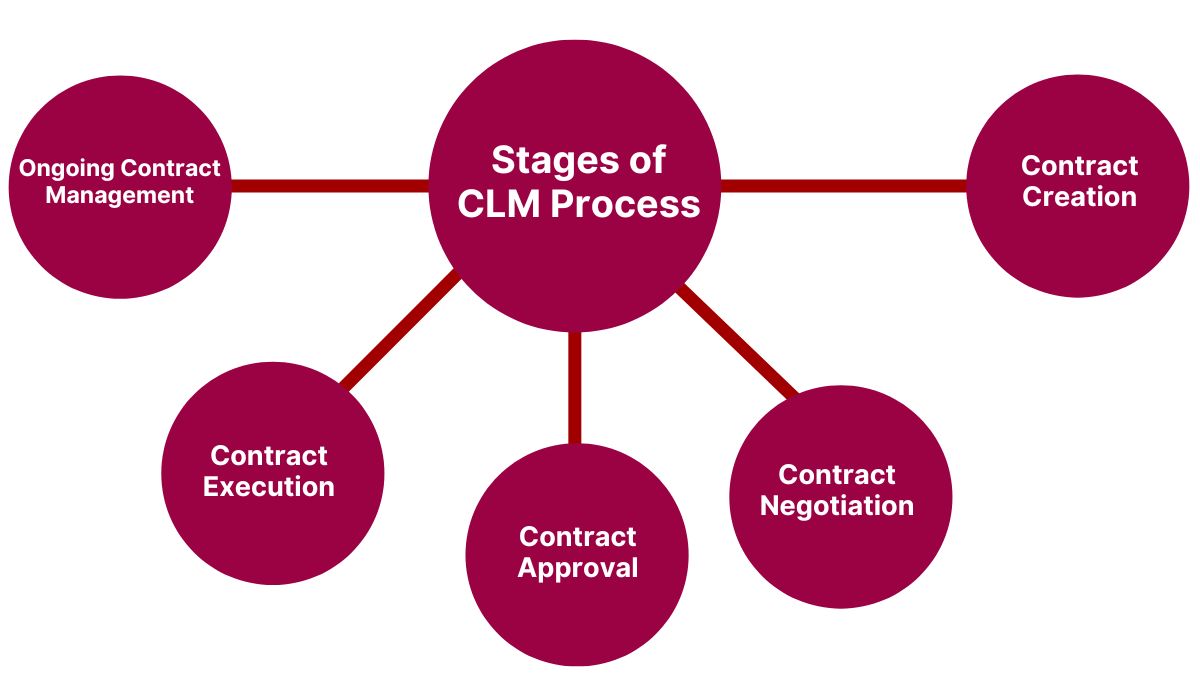In today’s fast-paced business world, managing contracts efficiently is critical to minimizing risk and maximizing value. This is where Contract Lifecycle Management (CLM) comes into play. CLM refers to the comprehensive process of managing a contract from initiation through execution, performance, and renewal or expiration. It ensures that every stage of the contract’s journey is streamlined, compliant, and aligned with business goals.
Modern organizations increasingly rely on CLM tools—software solutions designed to automate and optimize contract workflows. These tools help legal, procurement, and sales teams save time, reduce errors, and ensure full visibility into contractual obligations. In this article, we’ll explore what CLM really means, how it works, and how the right CLM tools can transform the way your business handles contracts.
What is Contract Lifecycle Management?
Contract lifecycle management (CLM) is the process of digitally managing agreements signed with customers, vendors, partners, or employees at each point of the cycle, and it includes the creation, management, sharing, and archiving of commercial contracts.
What is CLM Meaning?
Contract Lifecycle Management (CLM) refers to the management of all stages of a contract from creation, negotiation, approval, execution and eventual termination. The aim of CLM is to streamline the contract process, increase efficiency, reduce costs and improve compliance. This process is becoming increasingly important in today’s business environment, where contracts are becoming more complex and the need to manage them more effectively is becoming more pressing. Many businesses in the USA use CLM tools to reap the benefits of contract management software.
Contracts are the foundation of every business. Contracts govern job arrangements, commercial connections, and a plethora of other important business issues. Contracts, in a nutshell, are the atomic unit of commerce, the foundation of all economic activity and corporate processes.
Follow a contract through a company to learn everything you need to know about its approach to technology, process optimization, and risk management. Is a company’s speed more important than its security? Is it running a bunch of disconnected systems? Does automating high-volume procedures save money? Contracts reveal the truth.
Stages of Contract Lifecycle Management Process
The CLM process typically involves several stages including creation, negotiation, approval, execution, and ongoing management. Each of these stages is critical to the success of the overall contract management process.
Also Read: Medallion signature vs notary

- Contract Creation
- Contract Negotiation
- Contract Approval
- Contract Execution
- Ongoing Contract Management
Stage 1: Contract Creation
The first stage in the CLM process is contract creation. This involves the drafting of a contract, which outlines the terms and conditions of the agreement between the parties involved. The contract should be clear, concise and unambiguous to avoid any confusion or misunderstandings later on.
During this stage, it is important to know how to write a contract proposal and include any relevant legal clauses, such as indemnification, confidentiality, and termination clauses. These clauses protect both parties and ensure that the contract is legally binding and enforceable.
Stage 2: Contract Negotiation
The negotiation stage involves discussions between the parties involved to agree on the terms and conditions of the contract. This stage is critical, as it allows the parties to clarify any misunderstandings, discuss any concerns, and ensure that the contract reflects their intentions and expectations.
During the negotiation stage, it is important to keep track of any contract redlining made to the contract and to ensure that all parties are in agreement with the final version. This can be achieved through the use of a contract management software platform, which allows all parties to view and comment in the real-time blockchain contract management.
Stage 3: Contract Approval
Once the contract has been drafted and negotiated, it must be approved by all parties involved. This stage involves the review and approval of the contract by legal and business teams to ensure that it meets all legal and business requirements.
The approval stage is critical to the success of the overall CLM process, as it ensures that all types of clauses in a contract are legally binding and enforceable. Any changes made during the approval stage must be carefully documented to ensure that all parties are aware of the changes and are in agreement with the final version.
Stage 4: Contract Execution
The execution stage involves the signing of the contract by all parties involved. This stage is critical, as it ensures that the contract is legally binding and enforceable.
During the execution stage, it is important to ensure that all parties have signed the contract and that it has been properly executed. This can be achieved through the use of contract lifecycle management software, which allows all parties to sign the contract electronically and ensures that the contract is stored securely.
Also Read: Can I notarize for a family member in NY
Stage 5: Ongoing Contract Management
Once the contract has been executed, it must be managed and monitored throughout its lifecycle. This stage involves the ongoing monitoring of the contract to ensure that it is being adhered to and that all parties are meeting their obligations.
During the ongoing management stage, it is important to keep track of any changes made to the contract and to ensure that all parties are aware of these changes. This can be achieved through the use of a contract management software platform, which allows all parties to view and comment on the contract in real-time.
The ongoing management stage also involves the tracking of important dates, such as renewal dates and termination dates. This ensures that the contract is reviewed and renewed or terminated in a timely manner, reducing the risk of any potential disputes or any type of breach of contract.
Also Read: Contract administration vs contract management
What are the 5 benefits of CLM?
CLM Contract Lifecycle Management tools can bring many benefits to businesses, including increased efficiency, reduced costs, improved compliance, and reduced risk. Here are the top 5 benefits of a CLM system:
1. Increased Efficiency
A CLM system can help businesses to streamline their contract processes, reducing the time and effort required to create, negotiate, approve, execute, and manage contracts. By automating tasks and providing real-time access to contract data, a CLM solution can increase the speed and accuracy of the key elements of contract management process, reducing the risk of errors and delays.
2. Improved Contract Compliance Process
A CLM system can help businesses to ensure compliance with legal and regulatory requirements. By including standard clauses and templates, CLM platforms can ensure that implied contracts include all necessary provisions, reducing the risk of non-compliance. A CLM system can also provide alerts and reminders for important dates, such as contract renewal and termination dates, reducing the risk of missed deadlines and potential legal disputes.
3. Reduced Costs
A CLM system can help businesses to reduce costs associated with contract management lifecycle. By automating tasks and providing real-time access to contract data, a CLM system can reduce the need for manual processes and paper-based documentation, reducing the risk of errors and increasing efficiency. A CLM system can also help to identify areas for cost savings, such as by renegotiating contract terms or consolidating contracts with vendors.
4. Improved Collaboration
A CLM system can help to improve collaboration between stakeholders involved in the contract management process, such as legal teams, business teams, and vendors. By providing real-time access to contract data and enabling collaboration through comments and feedback, a CLM system can ensure that all parties are on the same page and that contracts reflect the intentions and expectations of all parties involved.
5. Reduced Risk
A CLM system can help businesses to reduce risk associated with contract management. By ensuring compliance with legal and regulatory requirements and providing real-time access to contract data, a CLM system can reduce the risk of errors, delays, and legal disputes. A CLM system can also provide alerts and reminders for important dates, reducing the risk of missed deadlines and potential legal disputes. Additionally, a CLM system can help businesses to identify and mitigate risks associated with contract negotiations, such as by identifying potential issues and providing recommendations for resolution.
Also Read: How to add an addendum to a contract
What is the Importance of Contract Lifecycle Management?
CLM assists organizations in reducing contract risks, ensuring regulatory compliance, auditing contracts for performance, and being organized from start to finish. Effective contract lifecycle management results in cost and time savings for any organization. Contract Lifecycle Management is important due to several factors such as:
- Minimize Contract Risks
- Ensures Contract Compliance
- Auditing Contract Performance
- Organized Contracts
- Cost Reduction
- Time Efficient
Also read: Contract Administration vs Contract Management
Conclusion
Legitt AI is one of the best and most user-friendly Contract Lifecycle Management (CLM) systems available in the United States right now. Legitt is AI-first application and acts as your assistant to create, sign and automatically track agreements and contracts.
Did you find this article worthwhile? More engaging blogs about smart contracts on the blockchain, contract management software and electronic signatures can be found in the Legitt Blogs section. You may also contact Legitt to hire the best contract lifecycle management services and solutions along with the free contract templates that are available online.
FAQs on What is CLM
What does CLM mean in legal?
In legal terms, CLM stands for Contract Lifecycle Management. It refers to the process of managing contracts from creation to execution, to ongoing management and compliance. A CLM system can help to streamline the contract management process, reduce risk, and improve efficiency.
Why is CLM needed?
CLM is needed because contracts are essential to businesses and can be complex, time-consuming, and prone to error. A CLM system can help to streamline the contract management process, reduce risk, improve compliance, and increase efficiency, saving time and money.
What are the 4 stages of contract life cycle?
The 4 stages of contract lifecycle are: 1) Contract Creation, 2) Contract Negotiation, 3) Contract Execution, and 4) Contract Management. The process begins with creating a contract and ends with managing the ongoing obligations and compliance requirements of the contract.
What are the objectives of CLM?
The objectives of CLM are to improve contract management efficiency, reduce risk and errors, increase compliance with legal and regulatory requirements, improve collaboration between stakeholders, and reduce costs associated with contract management. A CLM system aims to streamline the entire contract lifecycle process.
What are the key features to look for in a CLM solution?
Key features to look for in a CLM solution include contract creation and authoring, template and clause libraries, contract repository and search capabilities, workflow automation, electronic signature integration, contract analytics and reporting, and compliance management features. The solution should also be customizable and scalable to meet the organization's needs.
Can a CLM solution be integrated with other business systems?
Yes, a CLM solution can be integrated with other business systems, such as procurement, finance, and customer relationship management systems. Integration can help to improve data accuracy and streamline workflows, reducing manual input and increasing efficiency. It can also help to provide a more holistic view of contract-related information.
How can CLM software help in reducing contract processing time?
CLM software can help in reducing contract processing time by automating many manual tasks, such as contract creation, negotiation, approval, and execution. Workflow automation can help to reduce errors, minimize delays, and speed up the contract management process, ultimately reducing processing time.
Can CLM software help in automating contract renewals and terminations?
Yes, CLM software can help in automating contract renewals and terminations. The software can send alerts and reminders for upcoming expiration dates, automate the renewal process, and provide a centralized repository for tracking contract obligations and renewal terms, reducing the risk of missed deadlines and potential legal disputes.


